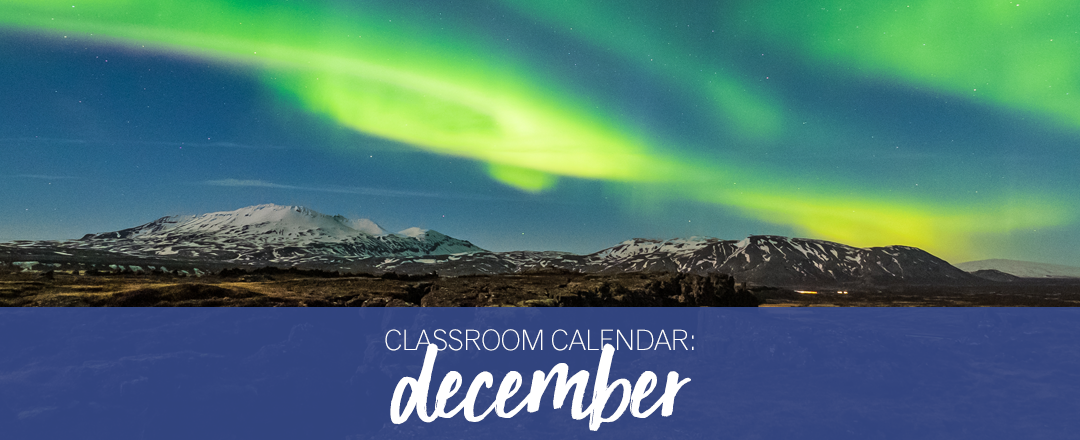Explorica is very proud of our new resource for teachers: our 2018-19 Around the World classroom calendar!
The calendar features a new country and an international holiday or event for you to celebrate with your students each month. Download a new page each month on this blog (and subscribe!), hang it up in your classroom, and talk to your students about how the holiday reflects the country’s history and culture.
This December, we’re featuring the Northern Lights. The Northern Lights, or aurora borealis, is a striking natural phenomenon where colors appear in the earth’s atmosphere. The lights are best viewed in northern countries like Iceland between the months of September and March, when long periods of darkness—the longest being December 21, the winter solstice—allow for optimal viewing.
December 21 is the winter solstice because it’s the day the north pole will be at its furthest from the sun. That means countries closer to the north pole will have the least sunlight. For example, Reykjavik, Iceland will have four hours, 17 minutes of daylight, and Bodo, Norway will have less than an hour of daylight.
Both the aurora and the winter solstice have long been significant for cultures around the world. For example, some aboriginal traditions in Australia say that the auroras are fires lit by spirits in the sky. In Iran, where it’s called “Yalda Night,” the winter solstice is celebrated with food and drink and reading poetry.
Questions to ask your students:
Why are days longer in the summer and shorter in the winter?
How is this affected by where you are on earth?
When and where is the next winter solstice?
Why do you think the winter solstice have a significance for different cultures? What about the aurora?

